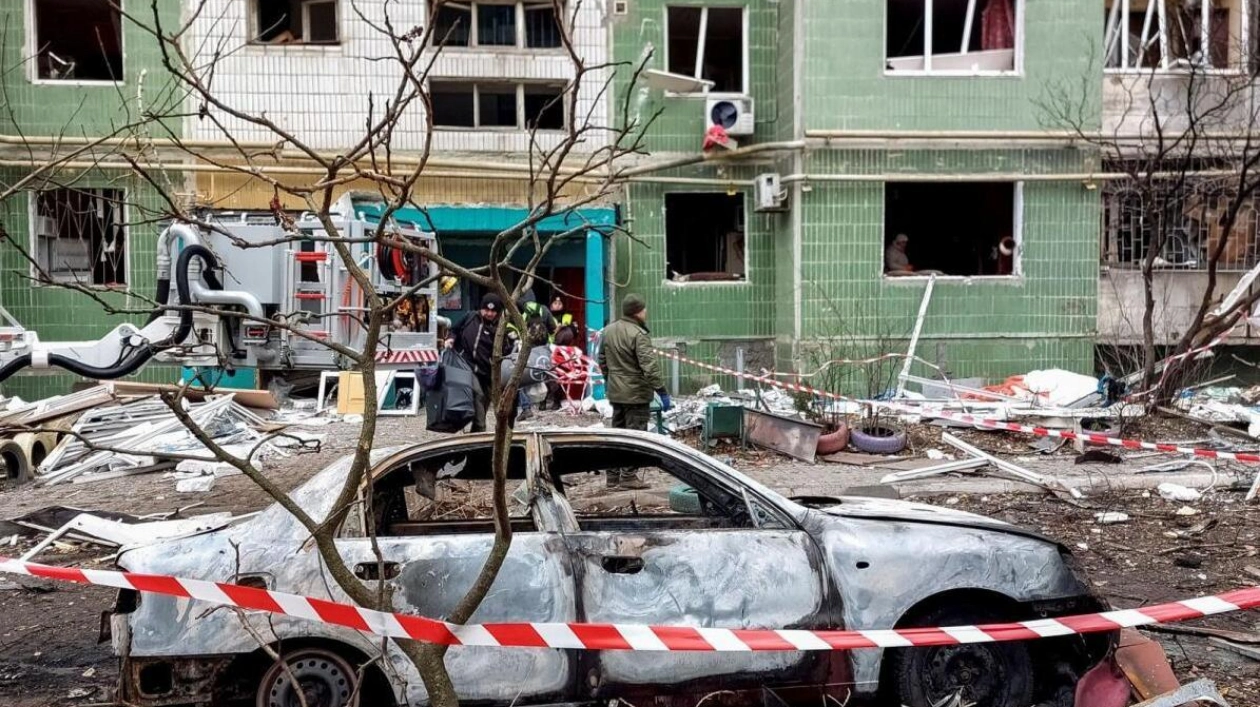A wrecked vehicle lies in front of a residential structure damaged by a Russian missile attack in Sumy, Ukraine, on November 18, 2024. — Reuters
The administration of President Joe Biden has granted Ukraine permission to utilize US-made weapons for deep strikes into Russia, according to two US officials and a source privy to the decision, marking a notable shift in Washington's stance on the Ukraine-Russia conflict. Ukraine is set to execute its inaugural long-range attacks in the coming days, though specifics remain undisclosed due to operational security. This decision comes two months before President-elect Donald Trump's inauguration on January 20, following months of requests from Ukrainian President Volodymyr Zelenskiy for permission to use US arms against Russian military targets far from the border. The policy change is largely in response to Russia's enlistment of North Korean ground troops to bolster its forces, a development that has raised concerns in Washington and Kyiv.
In his evening address, Zelenskiy stated that the missiles would 'speak for themselves.' The White House and US State Department declined to comment, and there was no immediate response from the Kremlin, which has cautioned that loosening restrictions on Ukraine's use of US weapons could lead to significant escalation. Ukrainian deep strikes are expected to employ ATACMS rockets, which have a range of up to 306km. While some US officials doubt that long-range strikes will alter the war's course, the decision could aid Ukraine as Russian forces advance, potentially enhancing Kyiv's negotiating stance in future ceasefire talks.
It remains uncertain whether Trump will reverse Biden's decision upon taking office. Trump has been critical of the scale of US aid to Ukraine and has pledged to end the war swiftly, without elaborating on how. Some congressional Republicans had urged Biden to relax the rules governing Ukraine's use of US-supplied weapons. Senior Biden administration officials have affirmed their commitment to ensuring Ukraine can effectively combat or negotiate from a 'position of strength' in the remaining months of the administration.
The US estimates that over 10,000 North Korean soldiers have been deployed to eastern Russia, with most moving to the Kursk region and engaging in combat operations. Despite heavy losses, Russia's military progress is its fastest since 2022, and Ukraine has reported clashes with North Korean troops in Kursk. Ukrainian forces, strained by personnel shortages, have ceded some ground captured in an August incursion into Kursk, which Zelenskiy views as a potential bargaining chip.
Alex Plitsas of the Atlantic Council noted that removing targeting restrictions would enable Ukrainians to 'stop fighting with one hand tied behind their back.' However, he believes the decision came too late, akin to the delayed provision of ATACMS, HIMARS, Bradley Fighting Vehicles, Abrams tanks, and F-16s. Zelenskiy's appeals had previously been met with reluctance from the White House, which feared that deep strikes inside Russia could escalate the conflict. Republican Representative Mike Turner praised Biden's decision as long overdue but emphasized that further restrictions should be lifted. Kyiv's allies have supplied weapons with limitations on their use inside Russia, fearing retaliation that could draw NATO countries into the war or provoke a nuclear conflict.
Poland's Foreign Minister Radoslaw Sikorski highlighted that Biden's move was a response to North Korea's involvement in the war and Russia's extensive missile strikes, asserting that it was communicated in a manner 'V. Putin understands.'
Source link: https://www.khaleejtimes.com






